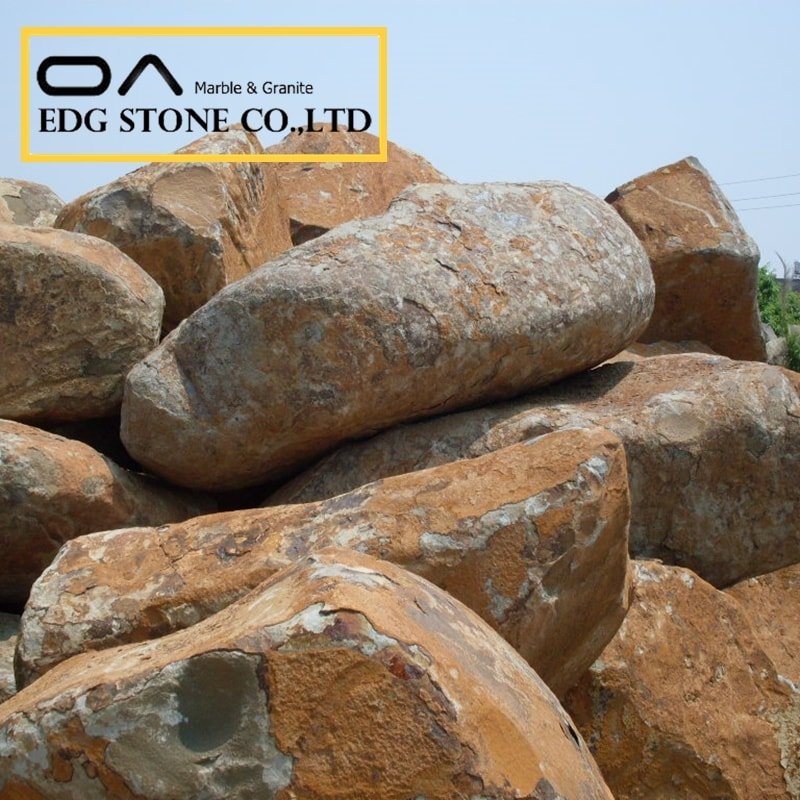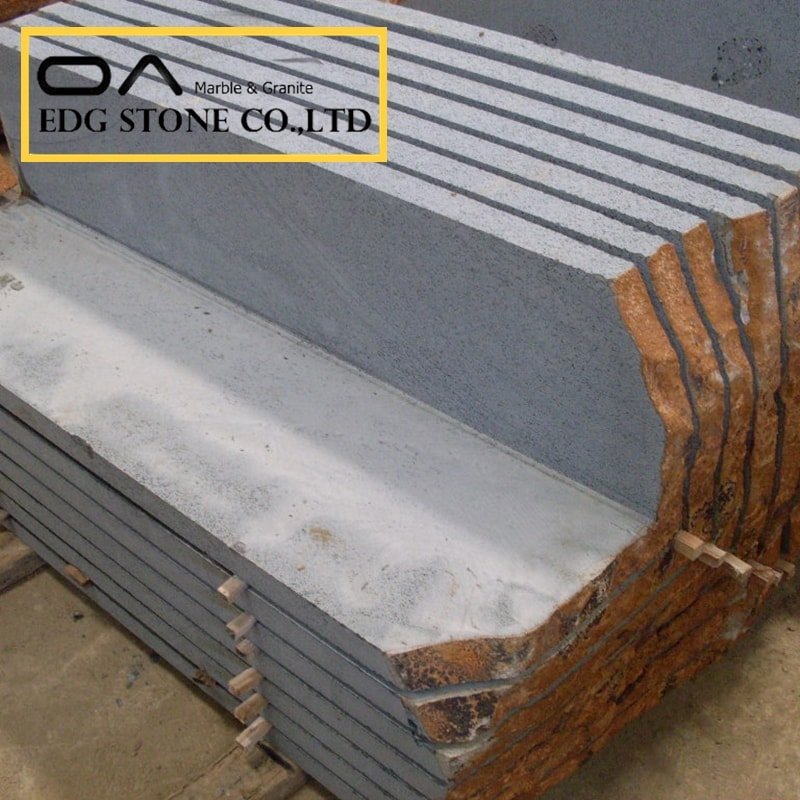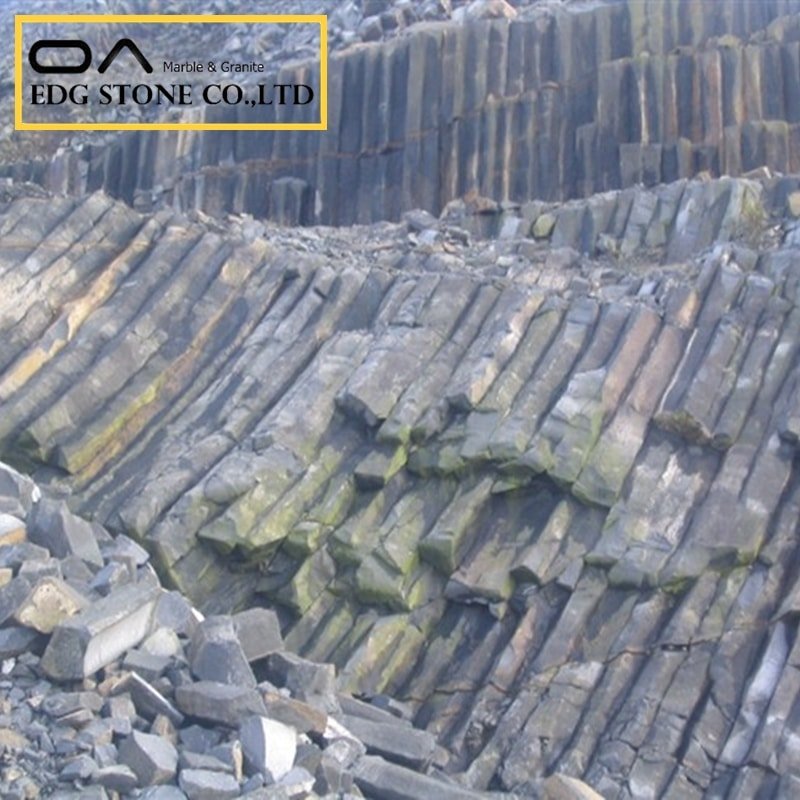Basalt is a fine‑grained, mafic igneous rock that underpins much of the Earth’s oceanic crust and forms spectacular volcanic landscapes. Its chemical makeup not only dictates its texture and color but also determines its industrial and environmental applications—from construction aggregate to carbon‑sequestration substrates. In this comprehensive 2000+ word guide, we will explore basalt’s composition, properties, types, uses, and geochemical behavior, incorporating SEO‑friendly long‑tail keywords to maximize discoverability.
Basalt: Composition, Properties, Types, Uses
Table of Contents
ToggleBasalt’s fundamental appeal lies in its chemical composition—a blend of silica, alumina, iron, calcium, magnesium, and trace elements—that gives rise to its characteristic dark color, hardness, and durability. As a basalt texture expert, you’ll recognize its fine‑grained groundmass, often punctuated by phenocrysts of plagioclase or olivine. Basalts vary by type (tholeiitic, alkali, high‑alumina, boninite), each defined by subtle shifts in oxide percentages. These variations drive applications such as:
Construction aggregates for roads and buildings
Basalt fiber production for high‑strength composites en.wikipedia.org
Rock wool insulation for energy‑efficient buildings insulationinstitute.org
Carbon removal substrates that accelerate mineral carbonation under engineered conditions


Chemical composition of basalt samples. | Download Table
The table below details the average oxide weight percentages in typical terrestrial basalts:
| Oxide | Average Range (wt%) | Role in Basalt |
|---|---|---|
| SiO₂ | 45–52 | Framework-forming silica; controls viscosity and color en.wikipedia.org |
| Al₂O₃ | 14–19 | Plagioclase feldspar component |
| FeO + Fe₂O₃ | 5–14 | Iron‑rich minerals contribute to color |
| CaO | 8–12 | Calcium‑rich plagioclase |
| MgO | 5–12 | Olivine and pyroxene content |
| Na₂O + K₂O | 2–5 | Alkali content differentiates from basaltic andesite en.wikipedia.org |
| TiO₂ | 0.5–2 | Accessory oxide in titanomagnetite |
Download the full dataset (CSV/Table) of basalt chemical compositions for global and regional samples.
Basalt – an overview | ScienceDirect Topics
According to ScienceDirect, basalts are primarily composed of pyroxene and plagioclase feldspar (up to 71 wt%), with accessory olivine, quartz, and alkali feldspar in some variants. Their basalt hardness (6–7 on Mohs scale) and basalt color (dark gray to black) arise from this mineral assemblage. Geochemically, low silica (45–52 wt%) and low alkali oxides (< 5 wt%) place basalt in the “mafic” category on the Total Alkali–Silica (TAS) diagram en.wikipedia.org.
Unlocking the Power of Basalt for Carbon Removal
Emerging research shows that finely ground basalts can accelerate carbon dioxide sequestration through mineral carbonation of CaO and MgO phases. Projects are exploring how is basalt formed to optimize feedstock selection—ultramafic basalts with high MgO content mineralize CO₂ more rapidly than typical tholeiites. The global abundance of basalt (over 90% of volcanic rock) makes it an attractive candidate for geologic carbon removal strategies.
Chemical Weathering of Basalts and Andesites
Basalts undergo rapid chemical weathering in humid climates due to their reactive Ca‑Mg silicates. Weathering rates influence soil fertility in basaltic soils, where nutrient release from aluminosilicate breakdown supports lush vegetation. Contrasting this with andesite weathering yields insights into landscape evolution and long‑term CO₂ drawdown in natural settings.
How is Basalt Formed?
Basalt originates from partial melting of the Earth’s upper mantle, producing low‑viscosity, Mg‑Fe‑rich magmas that erupt at mid‑ocean ridges, hotspots, and continental rifts. Rapid cooling at the surface yields the aphanitic (fine‑grained) basalt textures:
Pāhoehoe flows – smooth, ropy surfaces
‘A‘ā flows – rough, clinkery blocks
Columnar jointing – hexagonal fracture patterns in thick lava flows
Where is Basalt Found?
Oceanic crust: Covers ~60% of Earth’s surface
Flood basalt provinces: Siberian Traps, Deccan Traps, Columbia River Basalts
Volcanic islands: Hawaii, Iceland, Azores
Continental rift zones: East African Rift, Basin and Range Province
Basalt Texture and Composition
Basalt textures range from porphyritic (large crystals in a fine matrix) to vesicular (gas‑bubble cavities). The Basalt Texture and Composition interplay reveals eruption conditions—and can guide Basalt Mineral Composition Percentage estimates for industrial extraction.
Basalt Hardness and Color
Hardness: 6–7 Mohs—resistant enough for dimension stone and aggregate en.wikipedia.org
Color: Dark gray to black, sometimes with greenish hues if olivine is abundant
What is Basalt Used For?
Construction aggregate – roads, railway ballast
Dimension stone – tiles, countertops
Basalt fiber – composites, rebar, insulation en.wikipedia.org
Rock wool – thermal and acoustic insulation insulationinstitute.org
Stone wool panels – fire resistance in buildings
Chemical feedstock – mineral carbonation, industrial abrasives
Basalt Mineral Composition Percentage
Understanding precise Basalt Mineral Composition Percentage helps geologists and engineers tailor applications—high‑Ca basalts for cement additives, high‑Mg basalts for refractory products, and silica‑rich basalts for fiber production.
Types of Basalt by Composition
Tholeiitic basalts: Low alkali, moderate silica
Alkali basalts: Higher Na₂O + K₂O (> 5 wt%)
High‑alumina basalts: Al₂O₃ > 17 wt%
Boninites: MgO > 15 wt%
Frequently Asked Questions
Q1: What is the chemical composition of basalt rock?
Basalt typically contains 45–52 wt% SiO₂, 14–19 wt% Al₂O₃, 5–14 wt% FeO(±Fe₂O₃), 8–12 wt% CaO, 5–12 wt% MgO, 2–5 wt% Na₂O+K₂O, and 0.5–2 wt% TiO₂ en.wikipedia.org.
Q2: What is the composition of basalt?
Chemically, basalt is a mafic rock—rich in iron and magnesium, low in silica (45–52 wt%), and with total alkali oxides below 5 wt% en.wikipedia.org.
Q3: What is basalt made of?
Mineralogically, it consists of plagioclase feldspar, pyroxene, olivine (in some varieties), and accessory iron‑titanium oxides such as magnetite and ilmenite en.wikipedia.org.
Q4: What is basalt?
Basalt is an extrusive igneous rock formed by the rapid cooling of mafic lava at or near Earth’s surface. It comprises over 90% of oceanic crust and features a fine‑grained, aphanitic texture en.wikipedia.org.
Q5: What is basalt composed of?
On a molecular level, basalt is composed of silicon dioxide (SiO₂) chains, aluminum oxide (Al₂O₃) in feldspar frameworks, and abundant iron (FeO) and magnesium (MgO) cations in pyroxene and olivine structures en.wikipedia.org.
Q6: What are the primary minerals in basalt?
The dominant minerals are calcic plagioclase feldspar (labradorite), clinopyroxene (augite), and, where present, olivine—all crystallizing from mantle‑derived magmas.
Conclusion
By dissecting its chemical composition, exploring its textures, and mapping its global occurrences, we see that basalt’s blend of silica, iron, magnesium, and calcium oxides makes it both a geological cornerstone and an industrial workhorse. Whether you’re sourcing high‑quality basalt for fiber production, studying basalt texture and composition, or leveraging basalt’s carbon removal potential, understanding the numbers (45–52 wt% SiO₂, 14–19 wt% Al₂O₃, etc.) is key to unlocking its myriad applications.
30 SEO‑Friendly Tags:
basalt chemical composition,basalt texture,what is basalt used for,basalt mineral composition percentage,how is basalt formed,where is basalt found,basalt hardness,basalt color,basalt texture and composition,raw basalt identification,basalt supplier,basalt wholesale,basalt factory,basalt manufacturer,cheap basalt stone,buy basalt rock,China basalt supplier,high quality basalt,basalt fiber supplier,basalt aggregate,basalt dimension stone,basalt carbon removal,basalt geochemistry,basalt formation guide,basalt petrography,basalt uses in construction,basalt rock wool,basalt composite materials,basalt laboratory analysis,basalt mineralogy,
References
Wikipedia Contributors, “Basalt,” Wikipedia, https://en.wikipedia.org/wiki/Basalt en.wikipedia.org
USGS, “Basalt,” Volcano Hazards Program, https://volcanoes.usgs.gov/vsc/glossary/basalt.html volcanoes.usgs.gov
ScienceDirect Topics, “Effects of mineralogy, chemistry and physical properties of basalts on …,” ScienceDirect, https://www.sciencedirect.com/science/article/pii/S0883292721001554 sciencedirect.com
ScienceDirect Topics, “Basalt Fibre,” ScienceDirect, https://www.sciencedirect.com/topics/engineering/basalt-fibre sciencedirect.com
Wikipedia Contributors, “Basalt fiber,” Wikipedia, https://en.wikipedia.org/wiki/Basalt_fiber en.wikipedia.org
Insulation Institute, “Rock and Slag Wool Insulation,” Insulation Institute, https://insulationinstitute.org/wp-content/uploads/2016/01/N046-Rock-and-Slag-Wool-Insulation-Sustainable-Choices-for-Conserving-Energy.pdf insulationinstitute.org
Alex Strekeisen, “Basalt,” Alex Strekeisen’s Petrology Charts, https://www.alexstrekeisen.it/english/vulc/basalt.php alexstrekeisen.it
Allendale Fibertech Corporation, “A Short Review on Basalt Fiber,” Allendale Fibertech, https://allendalefibertech.com/wp-content/uploads/2023/02/Basalt-Technical-Fibers.pdf allendalefibertech.com
ScienceDirect Topics, “Tholeiitic Basalt,” ScienceDirect, https://www.sciencedirect.com/topics/earth-and-planetary-sciences/tholeiitic-basalt sciencedirect.com
Sandatlas, “Basalt – Igneous rocks,” Sandatlas, https://www.sandatlas.org/basalt/ sandatlas.org
